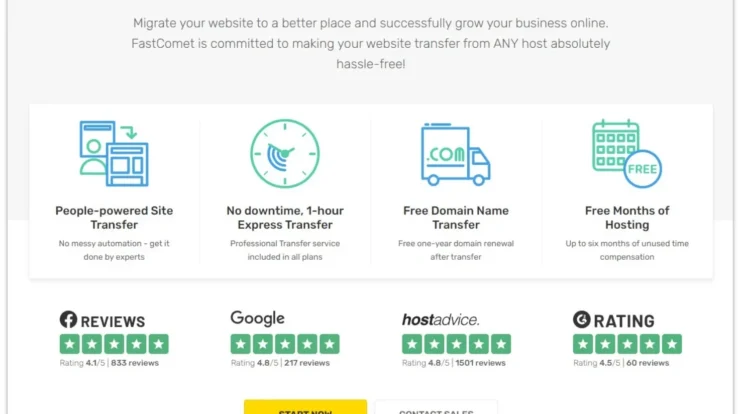
Choosing the right hosting solution is crucial for any developer, but especially for those managing high-traffic websites and applications.
A poorly performing hosting platform can lead to frustrating slowdowns, lost visitors, and ultimately, a diminished user experience.
This comprehensive guide dives into the critical aspects of selecting the best hosting for high traffic dev projects, providing invaluable insights for ensuring peak performance and scalability.
Modern development often demands platforms capable of handling immense volumes of data and concurrent user requests, a need that necessitates meticulous consideration of hosting infrastructure.
From server configurations to bandwidth limitations, every aspect of the hosting setup plays a vital role in achieving optimal performance for a high-traffic dev environment.
This article will explore various hosting options, scrutinizing key factors like server response time, storage capacity, and data transfer rates, all critical for a robust and responsive user experience.
Understanding the unique needs of high-traffic applications is essential for developers looking to create seamless and reliable online experiences.
Selecting the best hosting for high traffic dev is not a mere technical exercise; it’s a strategic decision that directly impacts the success of a project, ensuring both efficient performance and scalability to accommodate future growth.
This exploration of optimal hosting solutions empowers developers to make informed decisions, mitigating potential pitfalls and maximizing the chances of a high-performing, scalable application, ultimately benefiting both developers and end-users.
This guide will examine essential metrics to consider when evaluating hosting solutions for high-traffic development projects.
Scalability and High-Traffic Demands in Hosting
Choosing a hosting solution that can handle high traffic demands is paramount for the success of any high-traffic development project.
The ability to scale a hosting platform up or down in response to fluctuating traffic loads is a critical factor determining a good hosting solution for developers.
A hosting plan that cannot accommodate increasing user requests and data volumes will eventually lead to site performance issues and degraded user experience.
A robust hosting environment for high-traffic development projects needs to anticipate and manage sudden spikes in traffic without compromising speed or reliability.
This scalability aspect is directly tied to the core infrastructure and resources available within the chosen hosting platform. Modern high-traffic dev projects necessitate hosting platforms that leverage technologies capable of dynamically allocating resources.
Understanding the various tiers of hosting plans and their respective capabilities is essential for developers seeking the best hosting for high traffic dev projects. Different hosting plans will offer varying levels of scalability and resource allocation, making careful planning crucial.
High-traffic applications require hosting solutions featuring load balancing capabilities, which effectively distribute traffic across multiple servers. This ensures that no single server becomes overwhelmed, maintaining consistent performance even during peak usage.
Implementing a caching strategy is another critical aspect of high-traffic hosting. Caching mechanisms allow for storing frequently accessed data, reducing the load on the primary servers and accelerating content delivery to users.
Furthermore, high-performance hosting solutions for high-traffic dev environments often include robust database support, ensuring efficient data retrieval and storage operations.
Choosing a hosting provider with extensive experience in handling high-traffic websites and applications is a good indicator of its capability for managing anticipated project demands.
The optimal choice of hosting for a high-traffic development project requires careful consideration of anticipated traffic patterns and expected future growth. Predicting future needs is vital to ensure the hosting platform can adapt to these demands.
Ultimately, the best hosting for high traffic dev projects is one that effectively balances cost-effectiveness with the ability to handle fluctuating traffic levels and scalability, essential for maintaining peak performance.
Scalability and High-Traffic Demands in Hosting
Choosing a hosting solution that can handle high traffic demands is paramount for the success of any high-traffic development project.
The ability to scale a hosting platform up or down in response to fluctuating traffic loads is a critical factor determining a good hosting solution for developers.
A hosting plan that cannot accommodate increasing user requests and data volumes will eventually lead to site performance issues and degraded user experience.
A robust hosting environment for high-traffic development projects needs to anticipate and manage sudden spikes in traffic without compromising speed or reliability.
This scalability aspect is directly tied to the core infrastructure and resources available within the chosen hosting platform. Modern high-traffic development projects often rely on cloud-based hosting solutions offering dynamic scaling capabilities.
High-performance hosting for high-traffic projects typically involves various technical aspects, such as server specifications, bandwidth allocation, and database optimization.
Understanding the potential peak traffic demands is essential in selecting a hosting platform; developers should meticulously analyze anticipated visitor counts, anticipated traffic patterns, and potential surges.
High-traffic hosting solutions typically involve technologies like load balancing, content delivery networks (CDNs), and caching mechanisms.
Load balancing distributes incoming traffic across multiple servers, preventing any single server from becoming overloaded.
CDNs strategically distribute website content across a global network of servers, significantly reducing latency and improving loading times for users.
Caching mechanisms store frequently accessed data, reducing the need for repeated database queries, thereby improving performance.
Choosing the right hosting provider is not just about picking the cheapest option; it’s about selecting a vendor equipped to provide scalable hosting resources capable of efficiently handling high traffic volumes.
A comprehensive analysis of expected website traffic, combined with a meticulous assessment of hosting platform capabilities, is crucial for successful high-traffic website deployment.
The ability of a hosting platform to maintain optimal performance under pressure is essential for a high-traffic development project.
Scalable hosting solutions are crucial for the long-term success of high-traffic websites and applications; a poorly performing host can seriously hinder project growth.
Robust hosting solutions tailored for high-traffic websites often feature redundant systems and failover mechanisms to prevent service disruptions during peak periods.
Monitoring tools integrated into the hosting platform are essential for real-time performance assessment and proactive issue resolution.
Consequently, the scalability of a hosting solution directly impacts the success and longevity of a high-traffic development project.
Adequate resource allocation—storage space, RAM, and processing power—is a key aspect of scalable high-traffic hosting.
Developers should prioritize hosting providers known for their reliable infrastructure and commitment to high performance in order to handle the high traffic demands of successful dev projects.
Scalability and Performance for High-Traffic Development
A crucial aspect of selecting the best hosting for high-traffic development projects is its ability to scale seamlessly and deliver consistent performance.
Without robust scalability, your website or application can experience significant slowdowns, performance issues, or even crashes under heavy loads, hindering user experience and potentially damaging your reputation.
High-traffic websites frequently experience spikes in user activity, particularly during peak hours, product launches, or seasonal events. A hosting provider must have the infrastructure to handle these fluctuations without compromising speed or reliability.
This scalability directly impacts factors like server response time, database query processing, and content delivery. A scalable hosting solution ensures that your application remains responsive and accessible to all users even during periods of high traffic.
The fundamental principle of a strong hosting platform is its capacity for horizontal scaling – adding more resources (like servers) to handle the increased demand without disrupting the application’s operation. This contrasts with vertical scaling, which involves upgrading the existing server hardware, which might not always be economically feasible or flexible enough for unpredictable traffic surges.
Modern cloud hosting solutions often offer highly flexible and automated scaling capabilities, reacting dynamically to fluctuating traffic volumes. This adaptability is vital for high-traffic dev environments, ensuring consistent performance and minimizing downtime. Efficient resource allocation by the hosting provider is crucial for optimal performance.
Performance metrics such as load times, response times, and uptime should be meticulously evaluated when assessing a hosting provider’s suitability for a high-traffic website or application. Measuring these key metrics ensures that the hosting can withstand heavy load demands. A dedicated server hosting option can offer robust performance for demanding applications but requires careful monitoring.
In addition to scalability, high-traffic dev environments require robust infrastructure to support large datasets and complex applications. This may include optimized database solutions, powerful server processors, and high-speed network connectivity. Choosing a provider that prioritizes these features is critical in ensuring a smooth, responsive online experience for users.
Comprehensive monitoring tools offered by the hosting provider provide critical insights into the performance of your application. This allows for early detection and resolution of potential issues, enhancing stability, and minimizing disruptions. This proactive approach can lead to greater application reliability and a seamless user experience.
Ultimately, the best hosting for high-traffic dev projects needs to balance scalability, performance, and reliability, with a clear understanding of the potential for future traffic spikes and the needs of demanding applications.
Scalability and Performance
Scalability is paramount for a high-traffic development environment, as sudden surges in visitors or increased demands on application resources can cripple a poorly designed system.
A robust hosting solution must be able to effortlessly handle these fluctuations, ensuring consistent performance and minimizing downtime. This involves more than just having enough server resources; it also encompasses the architecture and design of the hosting infrastructure itself.
For example, a best hosting provider for high-traffic dev projects will employ load balancing techniques to distribute incoming traffic across multiple servers. This prevents any single server from becoming overwhelmed, maintaining response times and preventing bottlenecks.
Furthermore, the chosen hosting platform should offer options for horizontal scaling, allowing developers to easily add more server resources as the application’s demand increases. This ensures that the hosting solution can adapt to the ever-changing needs of the application, accommodating growth and preventing performance degradation.
Efficient caching mechanisms are also crucial for maximizing performance. By caching static content and frequently accessed data, the hosting environment can significantly reduce database queries and server processing demands, leading to a faster and more responsive user experience. A good best hosting provider for high traffic dev will implement caching strategies that adapt to application specifics.
Finally, reliable infrastructure is key. High-traffic development projects often face high volumes of requests, and the hosting platform needs to withstand this constant pressure. A solid foundation, including high-quality network connectivity, ensures dependable service and availability, which is critical for maintaining a positive user experience and avoiding project disruptions.
In conclusion, a scalable and high-performing hosting platform is fundamental for handling the fluctuating demands of a high-traffic development project. The right hosting solution, specifically one designed for high traffic, ensures smooth operation and optimal performance even under heavy load conditions.
Choosing the best hosting for high-traffic dev environments is crucial for maintaining a smooth user experience and ensuring the stability of your applications.
This article has explored the critical factors to consider when selecting a hosting provider, highlighting the importance of scalability, performance, reliability, and security.
From dedicated servers to cloud solutions, different hosting options cater to various project needs and budget constraints, impacting the overall development process.
The selection of the right hosting solution directly correlates with the success of your projects, enabling developers to efficiently handle increasing traffic loads and ensuring optimal performance.
Ultimately, selecting the best hosting for high traffic dev environments requires careful consideration of your project’s specific demands, including anticipated growth, predicted traffic spikes, and desired resource allocations. A robust and scalable hosting infrastructure can prevent application downtime, bottlenecks, and degraded performance, ultimately contributing to a more positive user experience and a successful online presence. A thoughtfully chosen hosting provider allows developers to focus on building innovative features and improving functionality without worrying about the underlying infrastructure. Finding the perfect balance between cost-effectiveness and high-performance hosting is paramount. The best hosting solution for high traffic dev projects directly impacts the user experience and the overall success of your development efforts.






